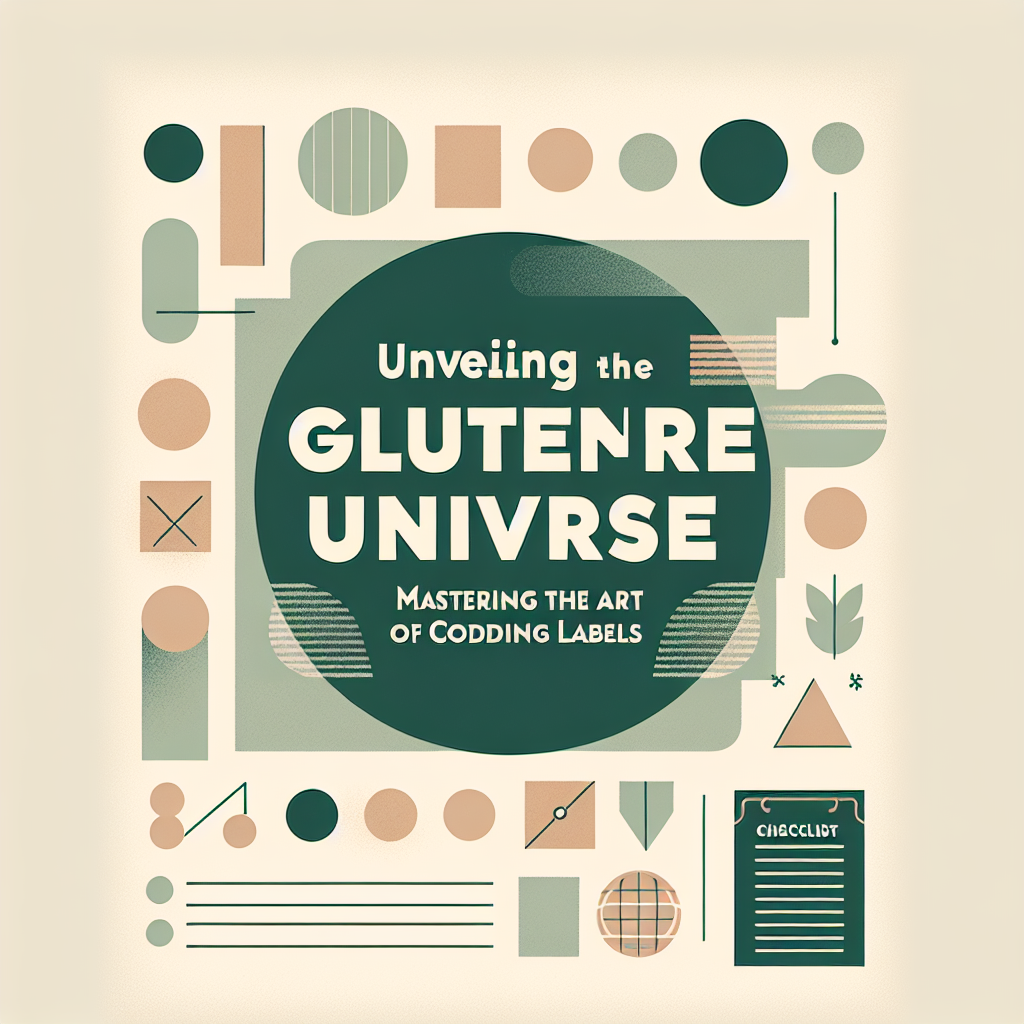Hello, dear reader! I hope you’re feeling inspired and ready to dive into the gluten-free universe today. Perhaps you’re sipping on a steaming mug of herbal tea or snacking on a delightful gluten-free treat, because today, we’ll put on our detective hats and embark on a ‘Labels Expedition’.
You see, one of the most critical skills in leading a successful gluten-free life isn’t about cooking or baking—it’s about learning how to carefully read and interpret food labels. While it may sound mundane, it’s actually an exciting journey, full of surprises and ah-ha moments. And by the end of this post, you’ll be an expert at decoding gluten-free labels, guaranteed! So, let’s get started.
Picture this: it’s a typical weekday evening, a blend of the day’s activities and the calm before tomorrow’s hustle. You’re at your favorite grocery store, roaming down the aisles, filtering through hundreds of items—occasionally admiring a new product or laughing at an absurd one. You’re hunting down ingredients for an exquisite gluten-free lasagna (a classic, right?), but suddenly, you’re stumped. You pick up a bottle of tomato sauce, squint at the fine print on the label, and a myriad of questions come to mind: “Is this gluten-free?”, “What does it mean if it doesn’t have a gluten-free label?”, “What if it’s manufactured in a facility that also processes wheat?”
It can be utterly frustrating and daunting, even for us experienced gluten-free troops, let alone if you’re just starting on your gluten-free journey. But don’t fret – you’re not alone. I’ve been down that road and I’m here to guide you with some practical tips on becoming a gluten-free label decoding pro!
The first question you may ask is, “Claire, why should I care about food labels? I mean, it’s just tomato sauce!” Well, dear reader, the tricky part about maintaining a gluten-free lifestyle is the hidden gluten, the wolf in sheep’s clothing. Hidden gluten can sneak into all sorts of products, from obvious ones like bread, beer, and cookies, to odd ones like soups, sauces, and even lipsticks! How, you wonder? That brings us to a topic we’ve discussed earlier: sneaky sources of gluten. Take a few moments to revisit that post—it’ll give you a better perspective of why we need to be gluten detectives.
Now, not all food labels are created equal. Though a majority of food manufacturers are considerate and label their products appropriately, others might not. So, how can you be sure? The answer is simple and twofold: ingredient list scrutiny and lookout for certification labels.
To begin with, always, and I mean always, check the ingredient list. This is your primary source of information. Gluten can wear many disguises such as malt, brewer’s yeast, or dextrin (read more about these hidden gluten sources here). If you notice anything suspicious or unclear, it’s better to put that item back on the shelf and choose a safer, clearly labeled option.
Additionally, the ‘Contains’ statement found on many food labels can be a helpful ally. You know, the part where they usually list milk, nuts, and yes, wheat! But do remember, the absence of wheat in this section doesn’t guarantee the product is gluten-free. Other grains like barley or rye, which are not required by FDA law to be called out, can still contain gluten.
Then, there’s the assurance of certification labels. Seeing a label that reads ‘Certified gluten-free’ is like a beacon of light in the gluten-free living journey. However, not every gluten-free product can afford this certification, and just because a product doesn’t have the certified label doesn’t mean it’s not safe. When you’re starting off, stick with certified products for peace of mind, and as you become more competent in your detective skills, you could branch out to other products as well.
In a world where gluten seems to lurk around in every corner, reading, understanding, and interpreting food labels is an invaluable skill. Being able to sift through countless products and select safe, gluten-free options will empower you and give you confidence in maintaining your gluten-free lifestyle. Moreover, it’s a sure-shot way to stay healthy and symptom-free.
Being on a gluten-free diet is more than just a lifestyle choice. It’s a commitment to your health, to maintaining a balance, and to fostering peace between you and your body. Our voyage through gluten-free living may be challenging at times, but trust me, it doesn’t have to feel like decoding the enigma code. With a little practice, you’ll be mastering the art of label reading in no time. And remember, as your trusted guide, I’m always here to help you navigate these gluten-free seas.
So, until next time, happy grocery shopping and happy label decoding, dear reader!
**Category: Educational Guides**


